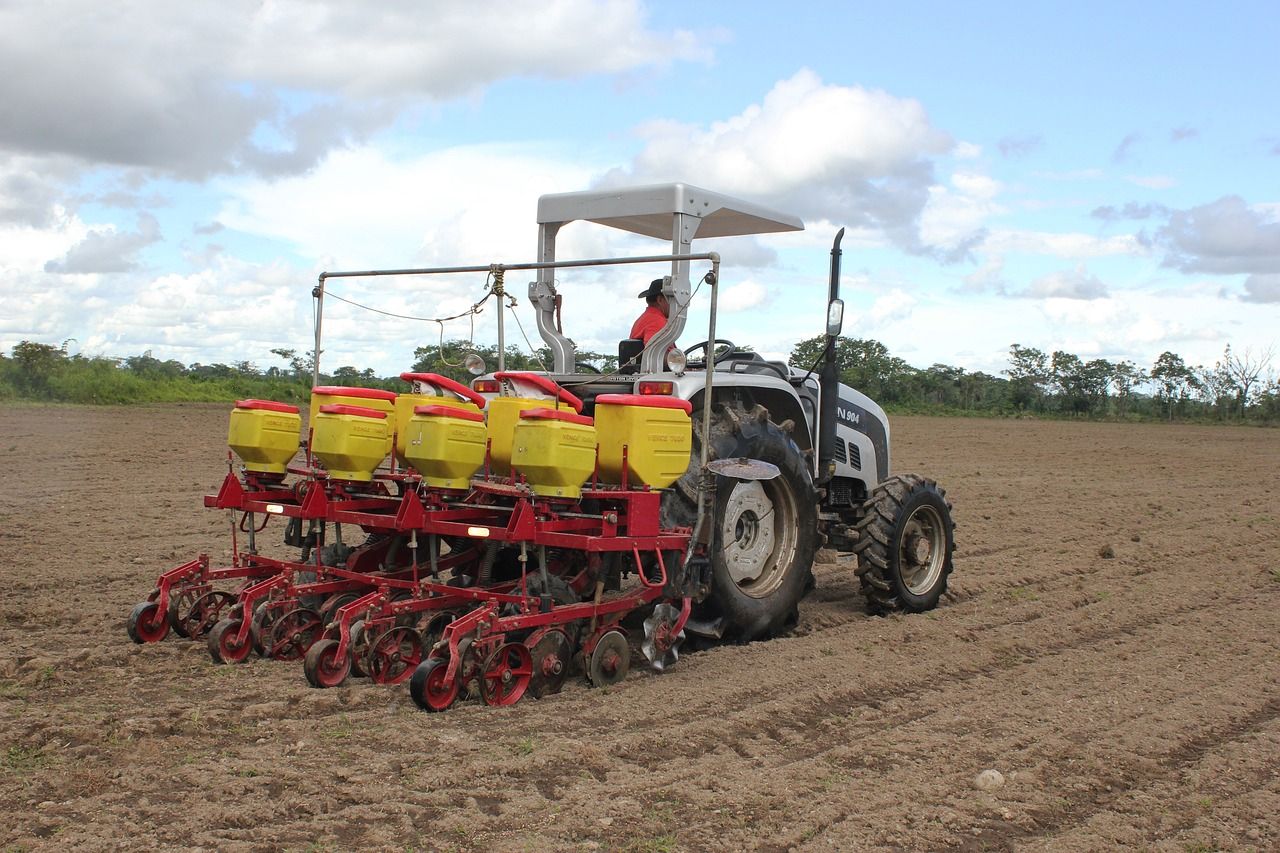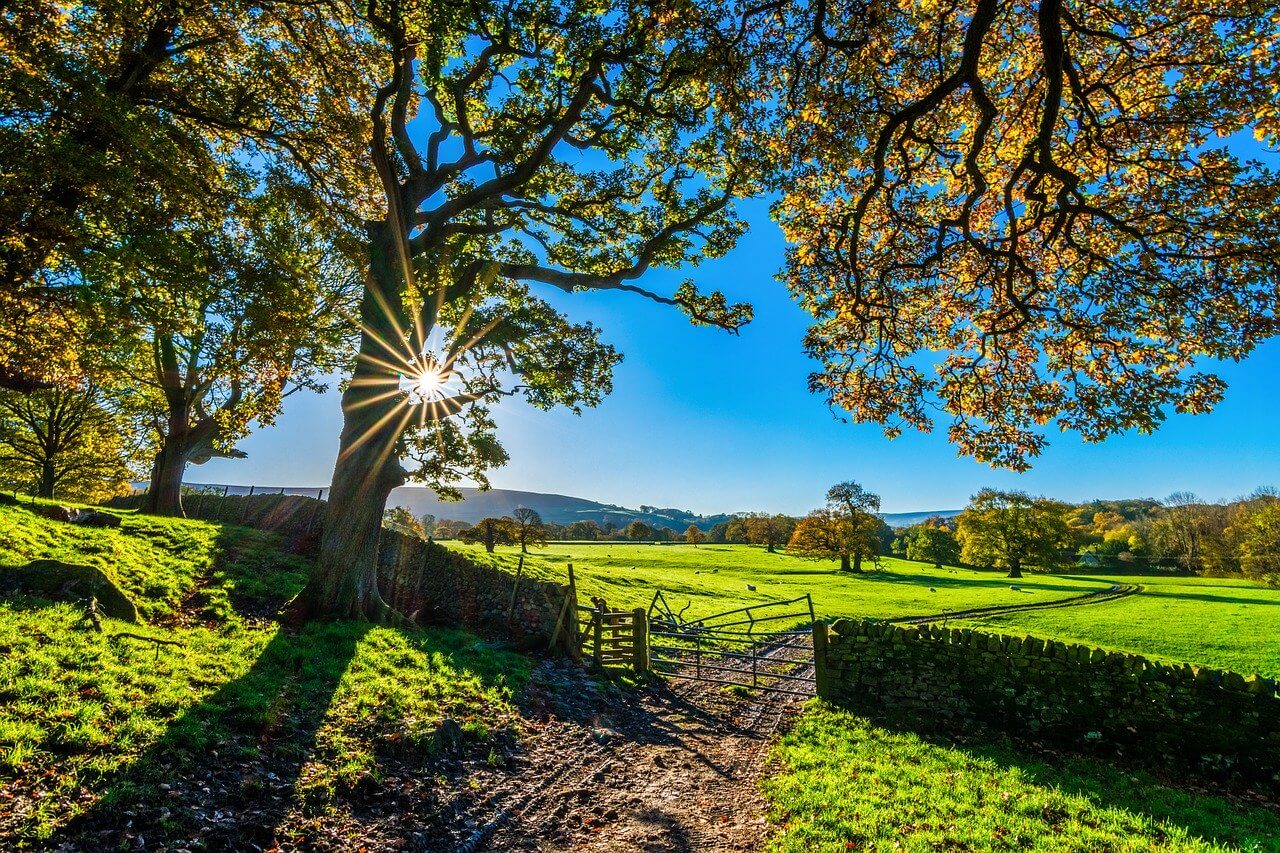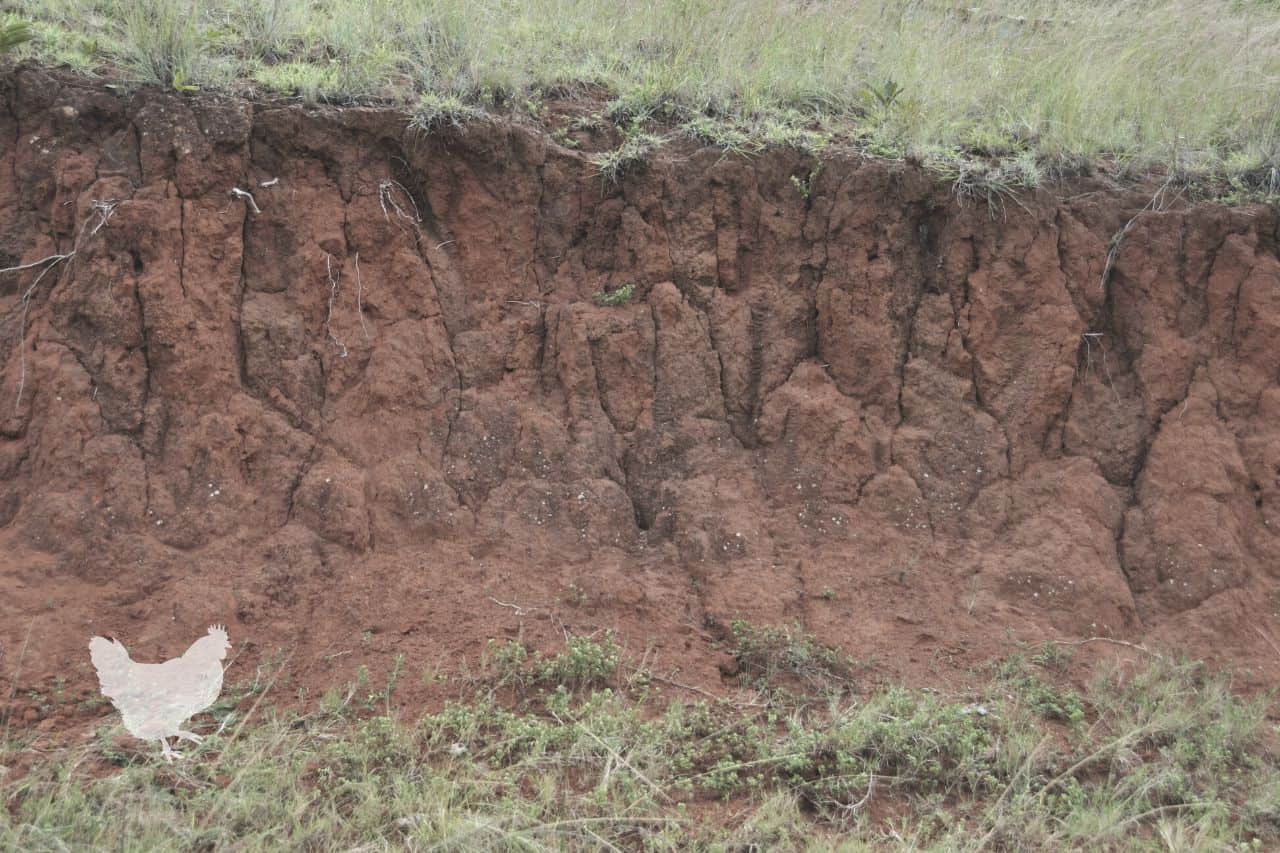Healthy soils make our world go round. They’re not only the backbone of the agricultural system we rely on for countless foods and materials but also provide environmental services crucial for a healthy water cycle, climate, and ecosystems. Unfortunately, soil erosion around the world is leading to mass degradation of soils leaving farmers and ecosystems alike in trouble. This leaves many starting farmers wondering, what can farmers do to reduce soil erosion?
Thankfully through proper agricultural practices, farmers can manage their farms to eliminate soil erosion and ensure healthy soils with bountiful harvests. Read on to learn more, and check also the two amazing informative videos below.
What You'll Learn Today
Soil Erosion On A Global Scale
Uncontrolled rates of soil erosion around the globe are depleting fertile and healthy topsoils at unprecedented rates.
According to the World Wildlife Fund website on Soil Erosion and Degradation, humans have been responsible for the loss 50% of all topsoils!
The UN Symposium on Soil Erosion estimates that by 2050 we may degrade more than 90% of all soils!
For farmers, this less arable land and greater dependence on intensive agricultural inputs like fertilizers, irrigation, and pesticides that further degrade the soil.
What Is Soil Erosion?
Soil erosion occurs when soil is mobilized and transported away from a region, usually by the force of wind or water.
It often occurs on bare soils that have been disturbed by poor agricultural practices, overgrazing, or forestry.
You’ve probably seen soil erosion taking place with your own eyes in the muddy streams that form after a strong rain.
Healthy Soils Don’t Erode
When soils are well managed and left undisturbed they are full of beneficial biology that protects them from erosion.
Beneficial bacteria and fungi that live within the soil produce natural glues that hold it together.
Plants in the soil also help by intercepting the rain with their foliage and litter, while their roots help bind it together.
Soil Erosion Destroys Your Top Soil
The first couple inches of your soil is the most important and biologically active part of your soil.
If free from erosion, organic matter and soil nutrients accumulate here to form the fertile dark soils.
Left undisturbed, a beneficial soil structure naturally develops providing countless physical improvements in the soil quality.
In natural systems, it can take thousands years to develop just 1-2 inches of topsoil!
8 Benefits Of Having A Healthy And Developed Top-Soil
- Better water holding capacity
- More nutrient availability for plants
- Reduced risk of disease and pests
- Less harmful weeds
- Presence of beneficial bacteria and fungi
- Better infiltration and drainage
- Improved gas exchange and oxygen availability
- Less need for fertilizers and other external inputs
Conventional Agricultural Practices Fuel Soil Erosion
Many modern agricultural practices cause accelerated rates of soil erosion and end up costing farmers the health of their soil.
If you’re a farmer this means the more you’ll have to spend on soil amendments and pesticides, many of which will cause further soil deterioration.
Thankfully, farmers willing to change out-dated-dates practices can eliminate soil erosion from their farms and begin developing their soils into fertile, living systems.
The Great American Dust Bowl
The Dust Bowl of the 1930s was a large-scale soil erosion event triggered by excessive plowing of the once fertile soils in the midwestern United States.
The topsoil soil that once occurred there were blown in severe dust storms known as “Black Blizzards” that turned the day into night.
This happened after the great plains were converted from perennial grasslands to plowed cropland.
This and the combination of drought in the 1930s resulted in this devastating environmental disaster that left farmers helpless and many as refugees.
While the Dust Bowl is one of the most documented cases of mass soil erosion, cases like this have occurred countless times across the world due to bad soil management practices.
Excessive Tilling Results In Soil Erosion
While in some contexts tilling can result in improved soil quality, excessive tilling severely damages soils and leads to soil erosion.
The disturbed and barren soils that are often left after tilling are not only easily blown or washed away, but the structure and soil biology become heavily disturbed.
It’s true that some nutrients do become more accessible after tilling, but in the long run it can deplete your soil’s fertility completely.
Effects On Soil Of Excessive Tilling
- Loss of soil organic matter
- Reduced water holding capacity
- Destruction of the soil food web
- Subterranean compaction
- Establishes a seed bank of pest plants
- Reduced soil fertility
Controlling Soil Erosion On Your Farm

There are many different ways to control soil erosion. They are extremely accessible and don’t require large financial investments, but they may require changing away from conventional management practices that have been adopted in the 20th century.
1. No-Till Farming
No-Till Farming is an agricultural practice that does exactly as the name implies: it eliminates tilling from the farm.
Tilling is typically only done once to open up compacted soils but is then no longer implemented before or after a crop cycle. This allows the soils to develop and become partially immune to soil erosion.
No-Till Farming usually requires more human labor since it largely eliminates heavy machinery but over time farmers will reduce expenses on agricultural inputs like fertilizers and pesticides.
2. Covering Bare Soils
Barren and exposed soils are the most susceptible to soil erosion. Keeping your soils covered with organic mulches or vegetation is one of the best ways to reduce soil erosion.
Aside from reducing soil erosion, using mulch or cover crops provides other benefits to your soils.
A. Mulching
Mulch is an organic material that is laid on top of your soil to help protect it from various environmental factors, including those that contribute to erosion.
It can be made of materials such as wood chips, straw, or the agricultural remanence of your previous harvest. Good mulch materials are typically woody and decompose slowly.
Benefits Of Mulching Your Soils:
- Reduces evaporation
- Impedes growth of weeds
- Adds organic matter and nutrients
- Greatly reduces erosion
- Temperature regulation
- Protects soil life from UV
- Feeds the soil food web
B. Cover Crops
Cover Crops are another good way to protect your soil using plants that improve the health of your soil.
Some cover crops are low growing and can be interplanted amongst your crops, while others are planted in between crop cycles when the field is left fallow.
Nitrogen-fixing cover crops can be used to improve the fertility of your soil and can serve as a nutritious and convenient mulch material.
Examples Of Nitrogen Fixing Cover Crops:
- Hairy Vetch
- Clovers
- Cow Peas
- Field Peas
- Trefoil
- Lupines
- Fava Beans
- Lentils
- Fenugreek
- Alfalfa
- Peanut Grass
3. Managing Your Slopes
If your farm has steep topography then soil erosion is a major risk. Improperly managed slopes not only erode easily, but can also result in detrimental landslides and gullies that eat away at your soil.
Identifying areas of most concern and managing them first should be one of your first tasks to combating soil erosion.
A. Stabilizing Slopes
Steep and exposed soils are the most prone to erosion. You can either manage these through the construction of retention walls, recontouring of the topography, or by planting deep rooted plants.
Perennial bunch grasses or fast growing trees are some of the best ways to stabilize steep topography. Designing terraces can be a great option for steep and uneven ground.
B. Planting On Contour
If your planting in rows on sloped topography it is best to design them so they follow the contour of your slope.
This means making each row level along the same elevation of your hillside. This will make your landscape more adept at retaining water and less likely to form gullies and erode.
C. Earthworks
Earthworks is a practice that involves reshaping the topography of your landscape to better manage the movement of water through your property.
By slowing, sinking, and spreading water you greatly reduce erosion and retain more water in your landscape.
This can involve the building of swales, terraces, or earthen mounds that alter the movement of water. Areas with excessive rain will have to design their earthworks differently than those in arid climates.
D. Consider Your Trails And Roads
Improperly designed trails and roads contribute to soil erosion because they often cause significant alterations to your topography.
They should be designed to follow gradual changes in elevation instead of being straight up a hillside where they can channel water and cause erosion. Designing them as switchbacks can be an excellent way to reduce erosion.
4. Agrochemicals Contribute To Soil Erosion
While sometimes it seems like the only option, the use of agrochemicals like fertilizers and pesticides can actually greatly contribute to soil erosion.
Many fertilizers deplete your soil’s organic matter, while pesticides can dramatically alter your soil food web. These end up eliminating the biology of your soil, including the organic glues and organisms that hold your soil together.
Using natural amendments like compost and natural pest repellents made from plants are great alternatives to agrochemicals.
Compost teas and other natural ferments are other ways to improve your soils health and help fight off harmful pests.
Managing Your Rangeland To Reduce Erosion

Overgrazing is one of the other leading causes of soil erosion around the world. For rangelands, erosion means it will be less productive and provide less of the favorable plants grazing animals need.
Properly managing your animals not only reduces rates of erosion but can lead to more productive rangelands and healthier animals.
1. Fencing
Fencing off sensitive areas like steep hillsides, unvegetated soils, and riversides is a great way to reduce erosion.
Fencing off different sections of your pasture in sections known as “paddocks” is one of the easiest ways to establish rotational grazing.
2. Rotational Grazing
Rotational grazing is a practice that involves moving your animals routinely through your rangeland to avoid overgrazing.
It gives pieces of your land a chance to rest and allow the favorable species to flourish and reproduce.
You will have to properly study the quality of your rangeland to understand the carrying capacity (how many animals can it handle) and how to design your grazing paddocks.
3. Salt Licks, Water, And Feeding
If you want to deter animals from a certain part of your rangeland another good option is attracting them to another location. You can do these with salt licks, watering stations, and feed in strategically placed locations.
Frequently Asked Questions

What are some of the main methods of erosion control?
Planting a cover crop, such as alfalfa or clover, can help with erosion control and will improve the quality of the soil. Mulching lightly with straw may also help to keep soil in place while your cover crop sets down roots. You may wish to surround the area of concern with silt fencing (UV stabilized woven polypropylene) or tree protection fencing.
Are there regulations governing soil erosion control?
Yes, each state has its own laws concerning approved methods for soil erosion prevention and control. That’s why it’s always good to check with your local agricultural extension agent to find out best practices for your area. Additionally, the Environmental Protection Agency has also published guidance on this topic.
What happens when soil erodes?
Erosion occurs in three phases:
- Detachment: In this initial stage the topsoil is removed from the ground.
- Transportation: In the second stage, the soil is blown or washed away to a different location.
- Deposition: Finally, the soil settles into its new setting.
The only part of this process that can be stopped is the first part. It’s important to take great care to prevent topsoil from becoming detached.
What are the main causes of soil erosion?
Soil that is overworked, overused and exposed to the elements is more likely to erode than soil that remains protected and is allowed to rejuvenate. You can keep your soil strong and resilient by keeping plant roots intact and/or planting new vegetation promptly whenever your soil is disturbed. Instead of using chemical amendments, add organic matter to the soil, keep it covered with mulch and/or cover crops and generally keep it protected against harsh elements such as sun, wind and excessive amounts of water.
Reducing Soil Erosion Regenerates Fertility
Once you’ve eliminated soil erosion from your farm you can begin building fertile and healthy soils.
By following regenerative practices like those mentioned in this article you can expect your soil to improve in quality season after season.
Overtime farmers who properly manage their soils can expect to have healthier plants with less effort and less need for agricultural inputs!
Summary Of How Farmers Can Reduce Soil Erosion
- No till farming
- Mulching
- Cover crops
- Stabilizing slopes
- Earthworks
- Planting on contour
- Not using agrochemicals
- Trail and road planning
- Properly managing rangelands
References:
For more information about soil erosion visit these websites below:
Very detailed and informative guide. Thank you for sharing.